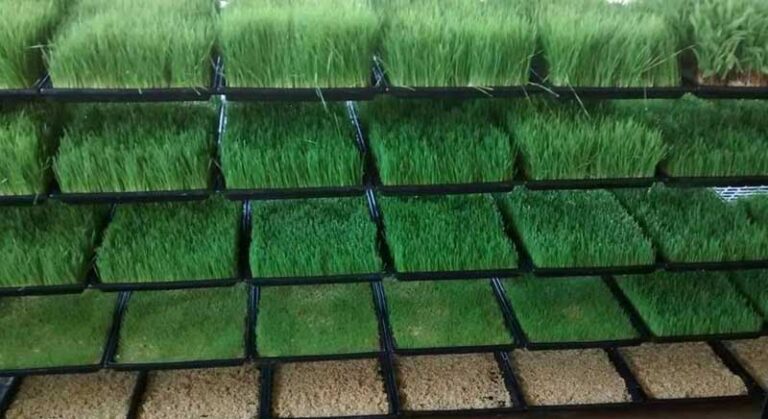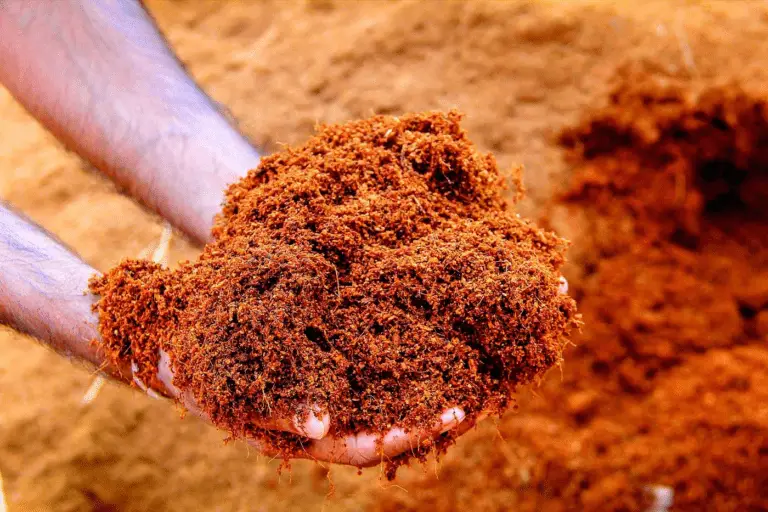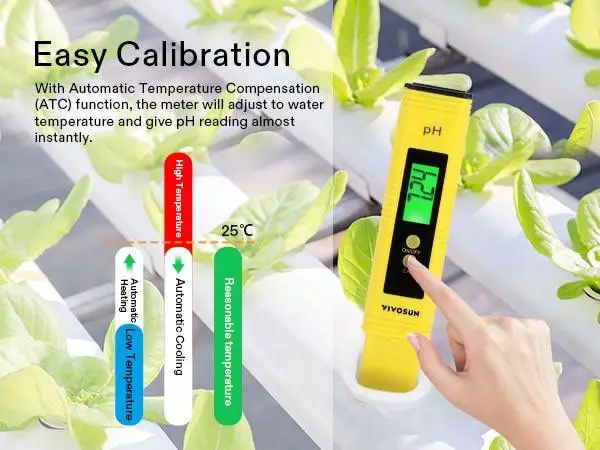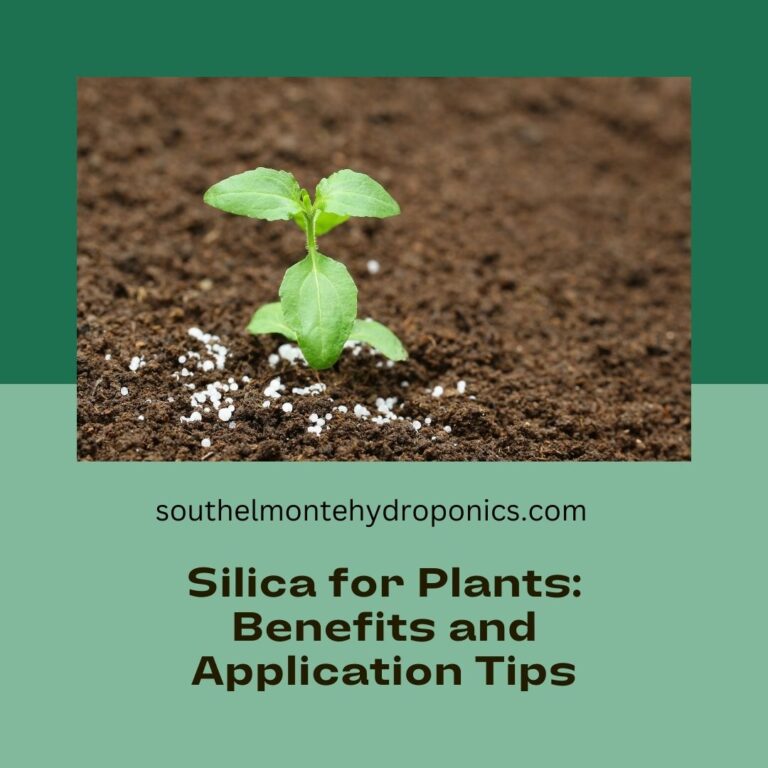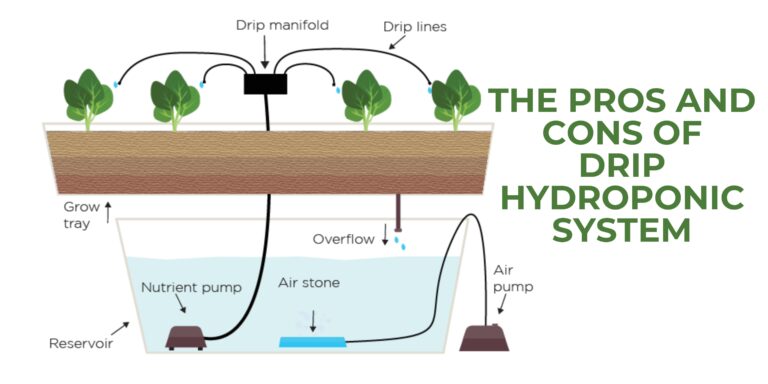Hydroponic Herb Garden: Fresh Herbs Year-Round
Table of Contents
Benefits of Growing Herbs Hydroponically
Hydroponic herb gardening offers a multitude of benefits that make it an attractive option for gardening enthusiasts. One of the key advantages is the ability to grow herbs year-round, regardless of the external climate or season. By creating an optimal indoor environment, hydroponic systems provide a controlled setting where temperature, light, and moisture levels can be carefully regulated to ensure the plants thrive. This eliminates the reliance on unpredictable weather conditions, allowing for consistent and abundant herb production.
Another significant benefit of growing herbs hydroponically is the efficient use of space and resources. Unlike traditional soil-based gardening, hydroponics utilizes a water-based nutrient solution that is delivered directly to the roots of the plants. This targeted approach eliminates the need for soil, resulting in a significant reduction in land requirements. Vertical hydroponic systems, in particular, maximize space utilization by stacking herbs on top of each other, making it an ideal solution for urban dwellers or those with limited gardening space.
Aside from space efficiency, hydroponic herb gardening also offers increased control over nutrient levels, resulting in healthier and more flavorful herbs. By supplying the plants with a precise blend of essential nutrients and minerals, hydroponic systems ensure that the herbs receive everything they need to grow optimally. This nutrient-rich environment promotes faster growth, higher yields, and a more robust flavor profile in the harvested herbs. Additionally, the use of a soilless medium reduces the risk of soil-borne diseases and pests, providing a clean and disease-free growing environment.
Different Types of Hydroponic Systems for Herb Gardens
When it comes to growing herbs hydroponically, there are several different types of systems that you can choose from. Each system has its own unique features and advantages, allowing you to find the one that best suits your needs and preferences.
One popular type of hydroponic system for herb gardens is the nutrient film technique (NFT) system. In this system, a thin film of nutrient-rich water flows continuously over the roots of the plants, providing them with a constant supply of nutrients. This method is great for smaller herb gardens, as it requires minimal space and allows for easy access to the plants.
Another option is the deep water culture (DWC) system, which involves suspending the plant’s roots in a nutrient solution. This system is easy to set up and maintain, making it a popular choice among beginners. It also provides excellent oxygenation to the roots, resulting in faster growth and healthier plants.
If you have limited space, you may consider using a vertical hydroponic system for your herb garden. This type of system allows you to stack multiple layers of plant beds vertically, maximizing the use of your available space. It’s a great option for apartment dwellers or anyone with a small balcony or patio.
No matter which type of hydroponic system you choose, it’s important to ensure that it provides adequate lighting, proper nutrient delivery, and efficient water circulation. By selecting the right system for your needs and following proper care guidelines, you can enjoy a thriving, year-round herb garden right in your own home.
Here’s a table summarizing the different types of hydroponic systems suitable for herb gardens:
| Hydroponic System | Description | Pros | Cons |
|---|---|---|---|
| Wick System | A straightforward system using absorbent wicks to feed nutrient-rich solution to plant roots. No electricity required. Ideal for beginners. | Inexpensive and easy to set up. Works well for herbs and small, leafy plants. | Impractical for large plants or vertical gardens. Uneven absorption of nutrients and water. Requires monitoring for rot and mold. |
| Deep Water Culture (DWC) | Plant roots sit directly in a bucket of nutrient solution, with an airstone providing oxygen. Simple setup with basic electrical demands. | Constant water and nutrient supply. Rapid plant development. | Diffuser monitoring is crucial to prevent root drowning. |
| Ebb and Flow (Flood & Drain) | A tank or tray filled with growing media and water. Plants are planted in the media. | Flexible and adaptable. Suitable for various plant sizes. | Requires electricity for pump operation. |
| Nutrient Film Technique (NFT) | A thin film of nutrient solution flows over plant roots. | Efficient nutrient delivery. Ideal for herbs. | Sensitive to power outages or pump failures. |
| Aeroponics | Plant roots are misted with nutrient solution. | Maximum oxygen exposure. Fast growth. | Requires precise misting and monitoring. |
| Drip Irrigation | Nutrient solution drips onto plant roots. | Customizable and versatile. | Prone to clogs and uneven distribution. |
Feel free to choose the system that best suits your needs and budget for your indoor herb garden!
Choosing the Right Herbs for Your Hydroponic Garden
When it comes to choosing the right herbs for your hydroponic garden, there are several factors to consider. First and foremost, you want to select herbs that thrive in a hydroponic environment. These herbs typically have shallow root systems and can tolerate the nutrient-rich and oxygenated water found in hydroponic systems.
Some popular herbs that are well-suited for hydroponic gardening include basil, mint, cilantro, parsley, and dill. These herbs not only grow well in hydroponic systems but also add a burst of flavor to your culinary creations. Additionally, herbs like rosemary and thyme can also be successfully grown hydroponically, although they may require a bit more attention and care.
As you choose your herbs, consider the space available in your hydroponic garden. Some herbs, such as mint, can be quite vigorous growers and may quickly take over the space if not properly managed. On the other hand, herbs like dill and cilantro have shorter lifespans and may need to be replanted more frequently to ensure a continuous harvest.
Remember, in hydroponic gardening, it’s not just about choosing the right herbs, but also about choosing the right variety. Some herbs have multiple cultivars, each with their own unique flavors and growth habits. Take some time to research specific varieties that are known to perform well in hydroponic systems to maximize your success.
Setting Up Your Hydroponic Herb Garden
When setting up your hydroponic herb garden, it is important to consider a few key factors to ensure the success of your plants. First, choose the right location for your garden. Ideally, it should be an area that receives ample sunlight or has access to grow lights if natural light is limited.
Next, select a suitable hydroponic system for your herbs. There are various options available, including nutrient film technique (NFT), deep water culture (DWC), and ebb and flow systems. Each system has its own advantages and considerations, so it’s crucial to research and understand the requirements of each before making a decision.
Once you have chosen your system, it’s time to gather the necessary equipment and materials. This may include grow trays, nutrient solutions, pH testing kits, water pumps, timers, and growing media such as rockwool or coco coir. It is important to invest in high-quality equipment to ensure the long-term success of your garden.
Additionally, before setting up your hydroponic herb garden, you should also consider the specific requirements of the herbs you plan to grow. Some herbs thrive in slightly acidic conditions, while others prefer a more neutral pH. Temperature and humidity levels should also be adjusted according to the needs of the plants.
In the next section, we will explore the importance of light in hydroponic herb gardening and how to provide optimal lighting conditions for your herbs’ growth. So stay tuned for expert advice and practical tips for your hydroponic herb garden journey!
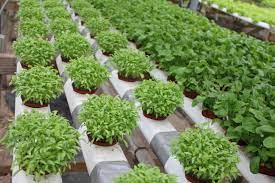
The Importance of Light in Hydroponic Herb Gardening
In hydroponic herb gardening, providing the right amount and quality of light is crucial for the plants’ growth and development. As we know, plants need light for photosynthesis, the process by which they convert light energy into sugars for energy. In traditional soil-based gardening, plants rely on sunlight to meet their light needs. However, in hydroponics, where plants are grown indoors or in controlled environments, artificial lighting systems are used to provide the necessary light.
One of the main advantages of using artificial lighting in hydroponic herb gardening is the ability to tailor the light spectrum and duration to the specific needs of the plants. Different herbs have different light requirements, and by using lighting systems with adjustable spectra, growers can optimize growth and enhance the plants’ flavor, fragrance, and nutritional value. For example, certain herbs, like basil and cilantro, require a higher intensity of light for optimal growth, while others, such as mint and chives, can thrive with lower light levels. By customizing the light spectrum, growers can provide the ideal conditions for each herb’s specific needs, leading to healthier and more productive plants.
Another advantage of artificial lighting in hydroponic herb gardening is the ability to control the day length. Some herbs, like parsley and dill, require longer days to initiate flowering and seed production, while others, like rosemary and thyme, prefer shorter days. By manipulating the lighting schedule, growers can induce flowering or delay it, depending on their desired outcomes. This level of control allows for a year-round supply of fresh herbs, regardless of the season or geographical location. Additionally, with artificial lighting, growers can extend the daily photoperiod during winter months when natural daylight may be limited, ensuring consistent growth and harvests.
In conclusion, light plays a pivotal role in hydroponic herb gardening. By employing artificial lighting systems, growers can provide the ideal spectrum and duration of light to meet the specific needs of different herbs. This level of control allows for optimized growth, enhanced flavors, and year-round herb production. As we delve deeper into the topic, we will explore the different types of lighting systems commonly used in hydroponics and the key considerations for choosing the right one for your herb garden. Stay tuned for more insights on maximizing the potential of your hydroponic herb garden through proper lighting techniques.
Understanding Nutrients for Your Hydroponic Herb Garden
Nutrients are a crucial element in hydroponic gardening, as they provide the essential elements necessary for the healthy growth and development of your herb plants. In a hydroponic system, plants are not grown in soil, but instead, they rely on a nutrient-rich solution that is directly delivered to their roots.
To ensure optimal plant growth and productivity, it is important to understand the key nutrients that your hydroponic herb garden requires. These nutrients can be categorized into two main groups: macronutrients and micronutrients. Macronutrients are needed by plants in larger quantities, while micronutrients are required in smaller amounts. The primary macronutrients include nitrogen (N), phosphorus (P), and potassium (K), also known as NPK. These nutrients play a vital role in various aspects of plant growth, such as leaf formation, root development, and flower production. Additionally, plants require micronutrients, such as iron (Fe), manganese (Mn), and zinc (Zn), to support their overall health and nutrient uptake.
Properly providing these essential elements can be achieved through the use of hydroponic nutrient solutions, which are specifically formulated to meet the precise needs of hydroponic plants. These solutions are designed to deliver the necessary macronutrients and micronutrients in a readily available form that plants can easily absorb. It is important to carefully follow the recommended dosage and application instructions provided by the manufacturer to avoid nutrient imbalances or deficiencies. By understanding the vital role of nutrients and the importance of maintaining an optimal nutrient balance, you can support the growth and vitality of your hydroponic herb garden, ensuring a bountiful harvest of flavorful herbs.
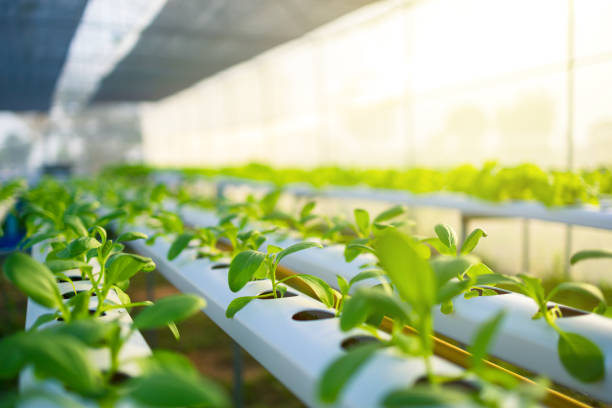
Maintaining pH Levels in Your Hydroponic Herb Garden
Maintaining pH Levels in Your Hydroponic Herb Garden
The pH levels in your hydroponic herb garden play a crucial role in the overall health and productivity of your plants. pH, which stands for potential of hydrogen, measures the acidity or alkalinity of a solution. In hydroponics, the ideal pH range for most herbs is slightly acidic, between 5.5 and 6.5. Maintaining the correct pH balance is essential, as it directly affects nutrient availability and absorption by the plants’ roots.
When the pH levels in your hydroponic system are not within the optimal range, it can lead to nutrient deficiencies or toxicities, stunted growth, and even plant death. To ensure that your herb garden thrives, regular monitoring and adjustment of pH levels are necessary. This can be done by testing the pH of the nutrient solution using a pH meter or test kit. If the pH is too high, meaning alkaline, you can lower it by adding acid solutions such as phosphoric acid. Conversely, if the pH is too low or acidic, you can raise it by adding alkaline solutions like potassium hydroxide.
Properly maintaining pH levels in your hydroponic herb garden not only promotes healthy plant growth, but it also helps to prevent nutrient imbalances and ensures optimal nutrient uptake. By regularly testing and adjusting the pH, you can create an environment where your herbs can thrive and flourish, resulting in abundant harvests of fresh and flavorful herbs for your culinary creations.
Watering Techniques for Hydroponic Herb Gardens
Watering techniques are crucial for the success of your hydroponic herb garden. Unlike traditional soil-based gardening, hydroponics relies on a nutrient-rich water solution to deliver water directly to the roots of the plants. This method allows for more efficient water usage and eliminates the risk of overwatering or underwatering.
One popular watering technique for hydroponic herb gardens is the drip system. This system delivers a steady flow of water directly to the plants through a network of tubes and emitters. The water is then collected and recirculated, reducing waste and ensuring that each plant receives the required amount of water. Drip systems are particularly beneficial for larger gardens or commercial setups where multiple plants need to be watered simultaneously. Additionally, they allow for easy customization and adjustment of water flow rates to cater to the specific needs of different herbs.
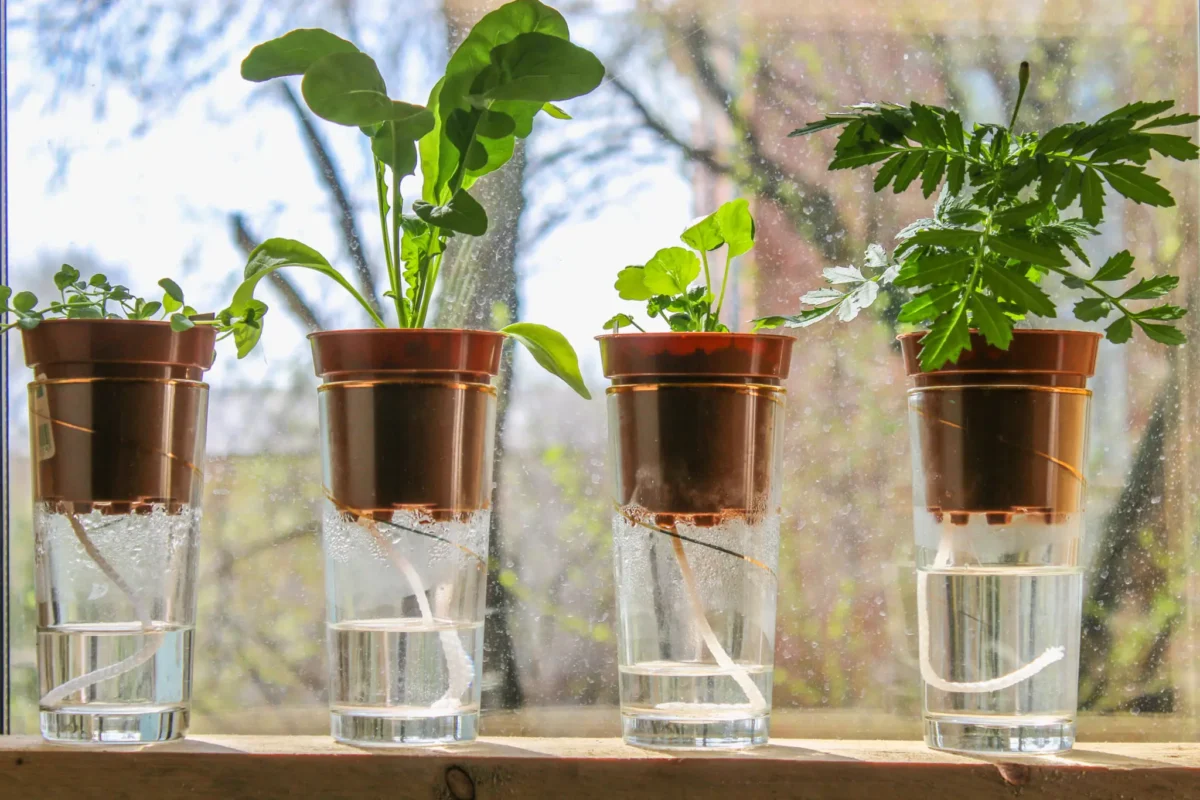
Controlling Temperature and Humidity in Your Hydroponic Herb Garden
Controlling the temperature and humidity in your hydroponic herb garden is essential for maintaining healthy and thriving plants. Both temperature and humidity play significant roles in the growth and development of herbs, and understanding how to manage these factors will ensure optimal conditions for your garden.
Proper temperature control is vital in creating an environment that allows herbs to flourish. Most herbs prefer temperatures between 60°F and 75°F (15°C – 24°C) during the day and slightly cooler temperatures at night. Fluctuations in temperature can stress the plants and affect their growth. To maintain consistent temperatures, consider using a thermostat-controlled heating system for colder climates or implementing cooling methods, such as fans or shade cloth, during hot summer months.
Humidity levels also impact the well-being of your hydroponic herbs. While different herbs have varying humidity preferences, a general rule of thumb is to aim for humidity levels between 40% and 60%. High humidity can lead to increased risk of diseases like powdery mildew, while low humidity can cause plants to dry out. To maintain proper humidity, consider using a humidifier or dehumidifier, depending on your specific needs.
By carefully monitoring and controlling the temperature and humidity in your hydroponic herb garden, you can create an optimal environment for your plants to thrive. Maintaining suitable conditions will not only promote healthy growth but also help prevent issues like plant stress, diseases, and pest infestations. Remember, each herb may have different preferences, so it’s essential to research and understand the specific requirements of the herbs you are growing.
Preventing and Managing Pests in Your Hydroponic Herb Garden
Keeping pests at bay is crucial for maintaining a healthy hydroponic herb garden. While hydroponic systems can help minimize the risk of pest infestations compared to traditional soil-based gardens, it is important to adopt preventive measures and promptly manage any potential issues that may arise.
One effective method for preventing pests in your hydroponic herb garden is to establish a clean and sterile environment from the start. Ensure that all equipment, containers, and tools are thoroughly cleaned and disinfected before use. This helps eliminate any potential sources of pests and disease-causing organisms. Additionally, it is essential to maintain a high level of hygiene by regularly removing any dead plant material or fallen leaves that may attract pests or provide breeding grounds for harmful organisms.
Harvesting and Storing Herbs from Your Hydroponic Garden
When it comes to harvesting and storing herbs from your hydroponic garden, there are a few important considerations to keep in mind. Firstly, it is crucial to harvest your herbs at the right time to ensure optimal flavor and aroma. Most herbs should be harvested in the morning, after any dew has dried but before the sun is at its strongest. This is when the essential oils in the herbs are at their peak, resulting in the best possible taste.
To harvest your hydroponic herbs, simply use sharp scissors or pruning shears to snip off the desired amount of foliage. It is important to avoid removing more than one-third of the plant’s total leaf surface at any given time, as this can put unnecessary stress on the plant. Instead, aim to trim the outermost leaves, allowing the inner leaves to continue growing for a continuous supply. Additionally, it is important to ensure proper hygiene during the harvesting process. Clean your tools with rubbing alcohol before and after use to prevent the spread of disease or pests.
Once you have harvested your herbs, it is time to properly store them to maintain their freshness and flavor. The best method for storing hydroponic herbs is to place them in a container lined with a damp paper towel or cloth. This will help to retain moisture and prolong the shelf life of the herbs. Alternatively, you can also store them in a plastic bag with a few holes punched in it to allow for airflow. It is important to store herbs in the refrigerator, as this will help to slow down the process of wilting and decay. However, keep in mind that different herbs have different storage requirements, so it is always a good idea to research the specific needs of each herb in your hydroponic garden.
Utilizing Vertical Space in Your Hydroponic Herb Garden
Vertical space is a valuable asset in hydroponic herb gardening, allowing you to maximize your yield and make the most of limited space. By utilizing vertical gardening techniques, you can grow a wide variety of herbs in a small footprint, whether you have a balcony, rooftop, or indoor space. One of the most popular methods for utilizing vertical space is the use of vertical grow towers or vertical wall gardens.
Vertical grow towers are freestanding structures that support multiple layers of plants. These towers are designed to provide optimal growing conditions for herbs, with built-in irrigation systems and strategically placed LED lights to ensure even distribution of light. The plants are grown in specially designed pots or net cups filled with a nutrient-rich growing medium. This method not only allows you to grow more herbs in a smaller space but also makes harvesting and maintenance tasks more accessible.
Another option for utilizing vertical space is the use of vertical wall gardens. These gardens consist of a vertical panel or structure with pockets or containers for planting herbs. These panels can be easily mounted on walls, fences, or other vertical surfaces. Vertical wall gardens are an excellent choice for those with limited floor space, as they can turn any wall into a green oasis. They also add a unique aesthetic appeal to your indoor or outdoor space.
By harnessing the power of vertical gardening techniques, you can significantly increase the number of herbs you can grow while maintaining an efficient use of space. Whether you choose vertical grow towers or vertical wall gardens, these innovative solutions will allow you to create a thriving hydroponic herb garden, no matter the size of your space. So why limit yourself to traditional horizontal gardening when you can reach new heights and expand your herb-growing potential?
Tips for Successful Pollination in Hydroponic Herb Gardens
Successful pollination is crucial for the growth and development of plants in hydroponic herb gardens. While the process may differ slightly from traditional soil-based gardens, with the right techniques, you can achieve optimal pollination rates and ensure a bountiful harvest.
One key factor to consider is the absence of natural pollinators in hydroponic systems. Unlike outdoor gardens where bees, butterflies, and other insects play a vital role in transferring pollen, indoor setups require manual intervention. To promote pollination, gently shake the flowering stems of your herb plants every day. This action helps dislodge and distribute pollen, increasing the chances of successful fertilization. Additionally, you can use a small, soft brush to mimic the action of an insect’s movement, effectively transferring pollen from the stamen to the pistil. By incorporating these practices into your hydroponic herb garden, you can enhance pollination rates and maximize your yields.
Troubleshooting Common Issues in Hydroponic Herb Gardening
One of the most frustrating aspects of hydroponic herb gardening is encountering common issues that can hinder the success of your plants. Understanding these problems and knowing how to troubleshoot them is crucial for maintaining a thriving hydroponic herb garden.
One common issue that gardeners may face is nutrient deficiency in their hydroponic system. Since hydroponic gardens rely on nutrient solutions to nourish the plants, it is important to ensure that the right balance of nutrients is maintained. Signs of nutrient deficiency include yellowing or discoloration of leaves, stunted growth, and poor fruiting. To address this issue, regularly monitor the nutrient levels in your system and adjust the nutrient solution accordingly. Conducting regular water tests can help you identify any deficiencies and allow you to make necessary adjustments to meet the specific nutrient requirements of your herbs. Additionally, it is essential to strictly follow the recommended nutrient mixing instructions provided by the manufacturer.
Here’s a table summarizing common issues in hydroponic herb gardening and practical solutions to address them:
| Issue | Description | Possible Causes | Solutions |
|---|---|---|---|
| Nutrient Deficiencies | Yellowing leaves, stunted growth, or slow growth | Imbalanced nutrient levels | – Check nutrient solution balance – Use hydroponic-specific nutrient mix – Adjust nutrient application frequency |
| pH Imbalance | Wilting, discoloration, or stress | Incorrect pH levels | – Monitor pH regularly – Adjust pH within optimal range (5.5 to 6.5) |
| Root Rot | Decay of plant roots | Excess moisture, poor oxygenation | – Improve drainage – Ensure proper oxygen supply |
| Clogged Filters | Reduced water flow | Accumulation of debris | – Clean filters regularly |
| Overwatering | Waterlogged roots | Excessive watering | – Adjust watering frequency – Improve drainage |
| Oxygenation Issues | Insufficient oxygen to roots | Poor aeration | – Use airstones or air pumps – Ensure proper oxygen exchange |
| Temperature Fluctuations | Stress on plants | Extreme temperatures | – Maintain ideal temperature (65°F to 75°F) |
| Pest and Disease Management | Pest infestations, fungal diseases | Lack of preventive measures | – Monitor plants for signs – Implement pest control strategies |
| Equipment Malfunctions | System failures | Electrical issues, pump malfunction | – Regularly check equipment – Address malfunctions promptly |
Remember to tailor these solutions to your specific hydroponic setup and herb garden.
Incorporating Hydroponic Herb Gardening into Your Everyday Cooking
Hydroponic herb gardening offers a myriad of benefits, not only in terms of sustainability and convenience, but also in enhancing the flavors and freshness of your everyday cooking. Imagine having a wide selection of vibrant and aromatic herbs right at your fingertips, ready to be plucked and sprinkled into your culinary creations. Incorporating hydroponic herb gardening into your everyday cooking can elevate your dishes to new heights, while providing you with an ongoing supply of nutritious and flavorful herbs.
By cultivating herbs hydroponically, you have the advantage of controlling the growing conditions to optimize the flavor and quality of your herbs. Hydroponic systems enable precise nutrient and pH levels, ensuring that your herbs receive the ideal combination of elements necessary for their growth. With this level of control, you can expect consistent and exceptional tasting herbs, free from pesticides and other contaminants commonly found in traditional soil-grown herbs. Additionally, the ability to grow herbs indoors and year-round allows you to have a constant supply of fresh herbs, regardless of the season, making it an invaluable asset to any avid cook. So, let’s explore how you can integrate these carefully cultivated hydroponic herbs into your everyday cooking, and embark on an exciting culinary journey filled with delightful flavors and limitless possibilities.
Expanding Your Hydroponic Herb Garden to Include Other Plants
Expanding Your Hydroponic Herb Garden to Include Other Plants allows you to broaden your options and explore a wider range of homegrown produce. While herbs are a great starting point for hydroponic gardening, expanding to include other plants can enhance both the variety and nutritional value of your harvest. By carefully selecting suitable plants and adjusting your hydroponic system accordingly, you can create a thriving garden that meets your culinary and dietary needs.
One excellent addition to consider is leafy greens such as lettuce, spinach, and kale. These plants are relatively easy to grow hydroponically and can provide a fresh and nutritious supply of salad greens throughout the year. With hydroponics, you can control essential factors like light, nutrients, and water, resulting in vibrant, pesticide-free greens that are packed with vitamins and minerals.
Another option to consider is strawberries, which are surprisingly well-suited to hydroponic cultivation. Strawberries grown hydroponically tend to yield larger and juicier berries compared to their soil-grown counterparts. Their compact size also makes them an ideal choice for vertical gardening systems, allowing you to maximize your space. Juicy, flavorful strawberries can be a delightful addition to your hydroponic garden, providing a sweet and tangy treat for your taste buds.
Expanding your hydroponic garden to include other plants allows you to experiment with different flavors and textures while enjoying the numerous benefits of hydroponic gardening. From leafy greens to berries, the possibilities are endless. Stay tuned for the upcoming sections where we will guide you through setting up and maintaining a successful hydroponic garden for these new additions. Let’s take your hydroponic gardening journey to the next level and savor the rewards of a diverse and thriving garden.
Please do watch video!
Can I use the same hydroponic system for growing other plants besides herbs?
Yes, you can definitely use the same hydroponic system to grow a variety of plants, including vegetables, flowers, and even fruits.
Do I need to adjust the nutrient solution for different plants in my hydroponic garden?
Yes, different plants have different nutrient requirements. It is important to adjust the nutrient solution accordingly to ensure optimal growth and health for each specific plant.
How do I choose the right plants to add to my hydroponic garden?
When choosing plants for your hydroponic garden, consider their growth habits, space requirements, and nutrient needs. Select plants that are well-suited for the hydroponic environment and are compatible with the herbs already growing in your garden.
Can I grow larger plants, such as tomatoes or peppers, in a hydroponic system?
Yes, it is possible to grow larger plants like tomatoes or peppers in a hydroponic system. However, you may need to provide additional support, such as trellises or stakes, to help the plants grow upright and prevent them from toppling over.
How do I control the temperature and humidity in my hydroponic garden when growing different plants?
To control temperature and humidity in your hydroponic garden, you can use fans, ventilation systems, and dehumidifiers. These tools help regulate the airflow and moisture levels, creating an ideal growing environment for various plants.
Are there any specific pests I should be aware of when expanding my hydroponic garden to include other plants?
Different plants may attract different pests. Be vigilant for common pests like aphids, whiteflies, or spider mites and take appropriate measures, such as using organic insecticides or implementing beneficial insects, to prevent and manage pest infestations.
How do I harvest and store the plants I grow in my hydroponic garden?
When harvesting plants from your hydroponic garden, use clean scissors or shears to cut the plants just above the growing medium. To store them, rinse the harvested plants gently, pat them dry, and place them in airtight containers or ziplock bags in the refrigerator.
Can I reuse the nutrient solution for different plants in my hydroponic garden?
It is generally recommended to replace the nutrient solution when transitioning to different plants. This ensures that the new plants receive the specific nutrients they require without any potential imbalances or contamination from the previous plant’s nutrient solution.
How can I make efficient use of vertical space in my hydroponic garden when adding different plants?
To utilize vertical space effectively, consider using trellises, vertical grow towers, or hanging baskets. These systems allow you to grow plants vertically, maximizing your available space and increasing your overall plant capacity.
Should I manually pollinate plants when expanding my hydroponic garden to include other plants?
Some plants may require manual pollination in a hydroponic garden. You can use a small brush or gentle shaking to transfer pollen between flowers. However, not all plants will require manual pollination, so research the specific needs of the plants you are growing.
What are some common issues I may encounter when expanding my hydroponic garden to include other plants?
Common issues in hydroponic gardening can include nutrient deficiencies or imbalances, pH fluctuations, root rot, and pest infestations. Regular monitoring, maintaining proper growing conditions, and addressing any problems promptly can help prevent and manage these issues effectively.
How can I incorporate the plants I grow in my hydroponic garden into my everyday cooking?
You can incorporate the plants from your hydroponic garden into your everyday cooking by using them fresh in salads, garnishes, or as flavor enhancers in various dishes. You can also dry or freeze the harvested plants for future use in soups, stews, sauces, or teas.

Nicole Burke is a dynamic writer at SouthElMonteHydroponics, fueled by her passion for horticulture and environmental sustainability. Armed with a degree in Environmental Science from a renowned institution, Nicole’s expertise lies in hydroponic gardening, organic farming, and biodiversity conservation. Her insatiable curiosity and love for nature drive her to explore innovative techniques in hydroponics, seeking to revolutionize the way we grow crops in urban environments. Nicole’s writing reflects her deep commitment to promoting eco-conscious practices and fostering a deeper connection between humans and the natural world. Through her engaging storytelling, she inspires others to embrace sustainable living and harness the power of hydroponics for a greener future.

